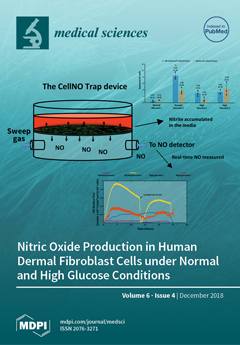Background: Asymptomatic bacteriuria (ASB) poses serious future clinical repercussions for reproductive women. The study determined the prevalence of asymptomatic bacteriuria along with anti-microbial susceptibility patterns among women of reproductive age in a primary care facility.
Method: The study recruited a total of 300
[...] Read more.
Background: Asymptomatic bacteriuria (ASB) poses serious future clinical repercussions for reproductive women. The study determined the prevalence of asymptomatic bacteriuria along with anti-microbial susceptibility patterns among women of reproductive age in a primary care facility.
Method: The study recruited a total of 300 women of reproductive age attending the Tetteh Quarshie Memorial Hospital at Akuapem-Mampong, Ghana, between January and March 2018. Questionnaires were administered to obtain demographic data and predisposing risk factors of ASB. An early-morning midstream urine sample was collected from participants. Urinalysis, urine culture, and anti-microbial susceptibility testing were performed.
Results: The mean age of participants was 25.43 years. The overall prevalence rate of ASB was 40.3%. The prevalence was higher among pregnant women compared to non-pregnant women (33.3% vs. 7.0%). The most common bacterial isolate was
E. coli (47.0%) followed by
Proteus spp. (36.4%),
Klebsiella spp. (8.3%), and
E. faecalis (8.3%). Leukocyturia (35.0%) followed by nitrate (30.0%) were the most common urine abnormalities identified on dipstick urinalysis. Most bacteria isolates showed increased resistance to ampicillin (95.04%) and tetracycline (95.04%) while most of the bacterial isolates were sensitive to levofloxacin (94.35%). Demographic characteristics including age (
p < 0.001), educational level (
p < 0.001), residency (
p = 0.001), and marital status (
p = 0.005) were significantly associated with ASB. Lifestyle characteristics such as sexual status (
p = 0.001) and frequency of washing of intimate parts after sexual intercourse (
p < 0.001) were also significantly associated with ASB.
Conclusion: Asymptomatic bacteriuria, particularly
E. coli and
Proteus spp. are prevalent in the urine of pregnant women living in Akuapem-Mampong municipality. Hence public education along with early screening of ASB is essential to reducing future risk of reproductive health complications. Future studies are required to assess the impact of public health on the rate of bacterial infections.
Full article




